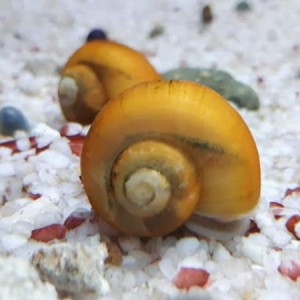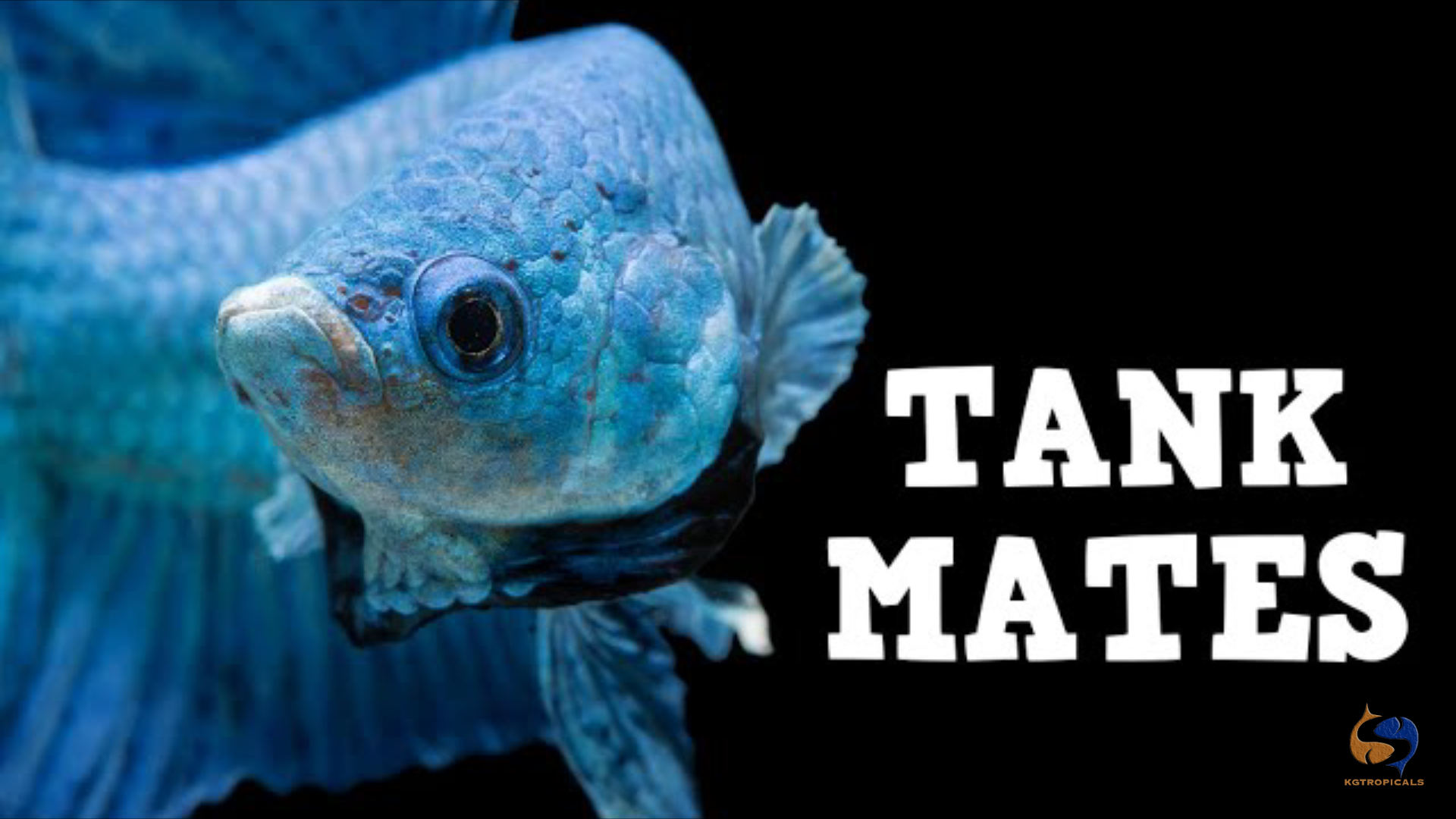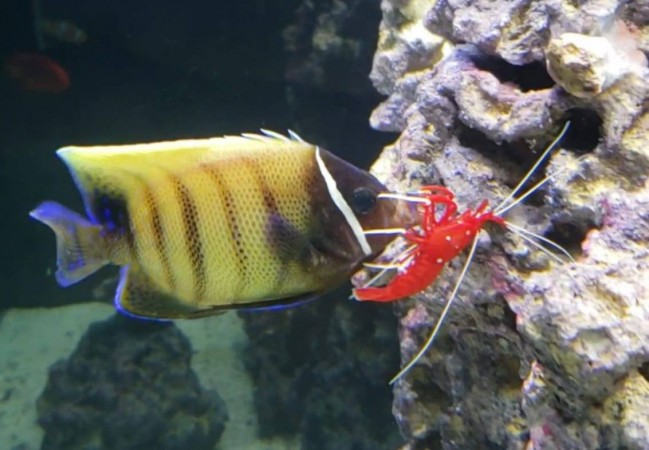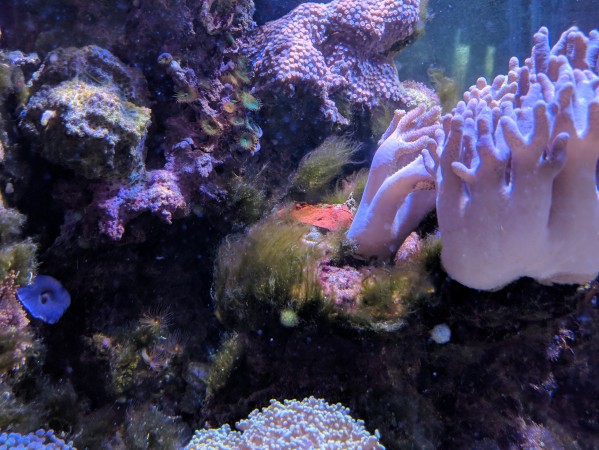- Name:
Apple Snail
- Family: Ampullariidae
- Species: Snail
- Scientific Name: Pomacea cuprina


-
Difficult
Care Level
-
Aggressive
Temperament
-
Omnivore
Diet
-
0%
Reef Safe
- 78
Temp (Temperature)
- NAN
pH (pH)
- NAN
NH3-4 (Ammonia)
- NAN
NO3 (Nitrate)
- NAN
PO4 (Phosphate)
- NAN
AT (Alkalinity)
- NAN
Ca (Calcium)
- NAN
Mg (Magnesium)
- NAN
SG (Salinity)
- NAN
ORP (Oxidation Reduction Potential)
- 0
Avg. Size (Inches)
- 5
Avg.Tank Size (Gallons)
- 3
Avg Life (Years)
General info about Apple Snail
Requires well-filtered water and the plants. The aquarium should be covered, they have a tendency to escape from open tanks.
Peaceful but may eat eggs and should not be combined with aggressive species, which could damage the delicate tentacles.
Reproduction involves the deposition of a large cluster of eggs, with its characteristic pink color and calcium carbonate-rich shell. Hatching occurs spontaneously after a few weeks if the humidity is high enough, and small snails feed on newborn and behave like adults.
Apple snails, Family Ampullariidae, are well-known and popular aquarium snails throughout the world because of their feeding characteristics that clean aquariums and attractive appearance, shape, and size. Members of the apple snail family are the biggest living freshwater snails on earth. Despite their popularity, not all apple snail species are a good choice for aquaria as their voracious appetite for aquatic vegetation is often not desired and the bigger species can cause problems with the water quality in smaller tanks.
Apple snails, Family Ampullariidae, also named as Mystery Snail, Golden Apple snail and Ivory snail, are well-known and popular aquarium snails throughout the world because of their feeding characteristics that clean aquariums and attractive appearance, shape, and size. Members of the apple snail family are the biggest living freshwater snails on earth. Their large size helps remove large amounts on rotting debris and algae. However, Apple Snails are not suitable for small aquariums. They grow very large and need a wide area to graze. Snails are sold being quite small (about 1 inch in diameter), but they may grow to be up to 3-4 inches.
Despite their popularity, not all apple snail species are a good choice for aquaria as their voracious appetite for aquatic vegetation is often not desired and the bigger species can cause problems with the water quality in smaller tanks. Apple Snails are excellent scavengers in large tanks with minimal plants.
Apple Snails come in a variety of colors and shell patterns including brown, tan, white or yellow and even blue, purple, pink, and jade, with or without banding on their shells. Apple Snails also exhibit different coloration between their bodies and shells with distinct contrasts like purple bodies and yellow and white shells being quite common.
In the home aquarium, Apple Snails are mostly active at night, while during the day they will usually retreat to shaded or darker area of the aquarium. When it is night time, the apple snail becomes active and engages in behaviors relating to feeding, as well as mating and laying eggs.
In the wild, they spend most of their life in water and they get out of it only accidentally or during their breeding period to lay the eggs. Still, although they spend the majority of time under the water, they need some atmospheric oxygen to breathe and they go up to the water surface to get it. Apple snail is capable to get oxygen both from atmospheric air and from the water. To do this it uses a special cavity divided with a partition: one part of the cavity is like the fish grill and it’s used to breathe oxygen dissolved in water and the other part is similar to lungs.
When reaching water surface the shellfish makes sure that it’s safe and opens its breathing tube (siphon – that is an elongated part of its pallium), and pumps the air inside the lung with rhythmic movements of all its body. An adult snail’s siphon can be about 4 inches long and the snail itself is rather large. The shell diameter can be up to 7 cm and its “leg” length – 3-4 inches and width – up to 1,57 inches.
Tank size should be at least 10 gallons in size. The optimum aquarium temperature for Apple Snails is around 70F - 80°F. Higher temperatures will increase spawning rates. Apple Snails require pH between about 6.5 and 8. They are fairly adaptable to a wide range of pH in captivity. Relative water hardness for Apple Snails should be 6-12 dKH. They are very adaptable to water hardness.
Their lifespan depends on the snail tank conditions and temperature. At low-temperature, apple snails live up to 3 years, at a temperature from 77° F the snail lives only about 12-16 month. At higher temperatures apple snails are more active, they grow faster and breed. However, the side effect of such living conditions is accelerated metabolism and, correspondingly, early death. The temperature for keeping apple snails may vary from 65- 84°F.
They are peaceful in nature but may eat eggs and should not be combined with aggressive species, which could damage the delicate tentacles. Fishes might bite or even eat snails by pulling out of them from their shells. When the body parts of apple snail were harmed, unless it is fatal, they have a wonderful regenerative capability. As a rule, the lost organ will grow back in about 25 days. It can be a bit smaller in size, but it’ll be completely working. These snails are even capable to regenerate their eyes.
Apple snails need adequate calcium in the water to prevent their shells to get cracked. If the shells get cracked, this can be easily fixed, by changing some amount of water in the tank or putting some mineral substances into it to make the water harder. But please keep in mind that the snails can plug up holes in their shells, but if the tip of their shell disappears it can’t be regenerated. However, the snails can quite live with that.
Apple Snail Diet & Nutrition
Most apple snails are voracious plant eaters (herbivores or macrophytophagous) that eat a wide range of vegetation. Held in captivity, they do well on common vegetables in combination with fish food. Unfortunately, many species have a great appetite for aquatic vegetation and algae are not their preferred food. In such cases, these scavengers can reduce the aquatic vegetation very quickly. They can ruin a beautiful aquarium within days.
They are omnivorous. Apple snails mostly consume debris and algae within the aquarium. They eat hair algae and are effective cleaners of aquarium glass and driftwood. Apple Snails have very healthy appetites and will quickly turn to other foodstuffs if algae are not available. It is for this reason that they are not recommended for many planted aquariums as they can put a lot of pressure on delicate or slow-growing plant species. Slow growing plants can be completely consumed to never grow back. When keeping Apple Snails it is best to keep them in an aquarium with fake or no plants. Otherwise, they can ruin a beautiful aquarium within days.
In smaller aquariums or with large numbers they will need to be fed extra food. While Apple Snails prefer algae, they will readily consume vegetables, plants, fish foods, brine shrimp, insects most and even dead fish or other decaying matter that they come across while scavenging the aquarium bottom. If you keep this species with live plants be sure to provide them algae wafers, vegetable-based sinking pellets or pieces of vegetable so that they will not turn on the plants living in the aquarium.
It is also not advisable to keep them with other snails or shrimp species. They will compete with many other invertebrate species for food, as they use their size to push other invertebrates like shrimp away from food that falls to the substrate. Shrimp or other scavenging species are often starved due to the lack of food available.
Breeding & Spawning Apple Snail
Apple Snails will breed in almost all conditions. Their populations often grow out of control and are difficult to eradicate. They rapidly reproduce and can become a nuisance in the aquarium. They consume large amounts of food and grow quickly. Apple Snail eggs are laid just above the water surface visible to the human eye. Interestingly old aquariums can sometimes have these eggs left attached to the glass. Destruction of these eggs will not prevent the species from reproducing.
Apple Snails are very easy to breed and if reasonable aquarium conditions of warm water temperatures and clean water are met, they will most likely breed. During this period male and female snails will join each other and the male snail is always on top. After the breeding is over the female snail gets out of the tank water and lays a big number of eggs above the water surface. Hatching time is from 2 to 4 weeks, depending on the temperature and humidity. Their eggs are of pale pink color and it has to be above the water not drowning into it, since this way the eggs will die. Their surface calcinates under the influence of air and baby snails become completely safe. Small snails appear in a few weeks at the condition that outside temperature is 5–81 °F and it’s humid enough. Newborn apple snails are rather large, fully-fledged and they don’t need any special care.
Reproduction involves the deposition of a large cluster of eggs, with its characteristic pink color and calcium carbonate-rich shell. Hatching occurs spontaneously after a few weeks if the humidity is high enough, and small snails feed on newborn and behave like adults.
Common Diseases with Apple Snail
There are several types of parasites for which the snails are carriers. However, the snails fight these parasites rather well, since apple snails are much more enduring then they are.
Apple Snail Origin
Apple Snail came from the river Amazon where it inhabits all along the river. Sometime later the snails spread to Hawaii, South-West Asia, and even Florida
Original Detail
| Name | Species | Family | Scientific Name | More Detail | Added by |
|---|---|---|---|---|---|
| Apple Snail | Snail | Ampullariidae | Pomacea cuprina | Requires well-filtered water and the plants. The aquarium should be covered, they have a tendency to escape from open tanks. Peaceful but may eat eggs and should not be combined with aggressive species, which could damage the delicate tentacles. Reproduction involves the deposition of a large cluster of eggs, with its characteristic pink color and calcium carbonate-rich shell. Hatching occurs spontaneously after a few weeks if the humidity is high enough, and small snails feed on newborn and behave like adults. Apple snails, Family Ampullariidae, are well-known and popular aquarium snails throughout the world because of their feeding characteristics that clean aquariums and attractive appearance, shape, and size. Members of the apple snail family are the biggest living freshwater snails on earth. Despite their popularity, not all apple snail species are a good choice for aquaria as their voracious appetite for aquatic vegetation is often not desired and the bigger species can cause problems with the water quality in smaller tanks. Apple snails, Family Ampullariidae, also named as Mystery Snail, Golden Apple snail and Ivory snail, are well-known and popular aquarium snails throughout the world because of their feeding characteristics that clean aquariums and attractive appearance, shape, and size. Members of the apple snail family are the biggest living freshwater snails on earth. Their large size helps remove large amounts on rotting debris and algae. However, Apple Snails are not suitable for small aquariums. They grow very large and need a wide area to graze. Snails are sold being quite small (about 1 inch in diameter), but they may grow to be up to 3-4 inches. Despite their popularity, not all apple snail species are a good choice for aquaria as their voracious appetite for aquatic vegetation is often not desired and the bigger species can cause problems with the water quality in smaller tanks. Apple Snails are excellent scavengers in large tanks with minimal plants. Apple Snails come in a variety of colors and shell patterns including brown, tan, white or yellow and even blue, purple, pink, and jade, with or without banding on their shells. Apple Snails also exhibit different coloration between their bodies and shells with distinct contrasts like purple bodies and yellow and white shells being quite common. In the home aquarium, Apple Snails are mostly active at night, while during the day they will usually retreat to shaded or darker area of the aquarium. When it is night time, the apple snail becomes active and engages in behaviors relating to feeding, as well as mating and laying eggs. In the wild, they spend most of their life in water and they get out of it only accidentally or during their breeding period to lay the eggs. Still, although they spend the majority of time under the water, they need some atmospheric oxygen to breathe and they go up to the water surface to get it. Apple snail is capable to get oxygen both from atmospheric air and from the water. To do this it uses a special cavity divided with a partition: one part of the cavity is like the fish grill and it’s used to breathe oxygen dissolved in water and the other part is similar to lungs. When reaching water surface the shellfish makes sure that it’s safe and opens its breathing tube (siphon – that is an elongated part of its pallium), and pumps the air inside the lung with rhythmic movements of all its body. An adult snail’s siphon can be about 4 inches long and the snail itself is rather large. The shell diameter can be up to 7 cm and its “leg” length – 3-4 inches and width – up to 1,57 inches. Tank size should be at least 10 gallons in size. The optimum aquarium temperature for Apple Snails is around 70F - 80°F. Higher temperatures will increase spawning rates. Apple Snails require pH between about 6.5 and 8. They are fairly adaptable to a wide range of pH in captivity. Relative water hardness for Apple Snails should be 6-12 dKH. They are very adaptable to water hardness. Their lifespan depends on the snail tank conditions and temperature. At low-temperature, apple snails live up to 3 years, at a temperature from 77° F the snail lives only about 12-16 month. At higher temperatures apple snails are more active, they grow faster and breed. However, the side effect of such living conditions is accelerated metabolism and, correspondingly, early death. The temperature for keeping apple snails may vary from 65- 84°F. They are peaceful in nature but may eat eggs and should not be combined with aggressive species, which could damage the delicate tentacles. Fishes might bite or even eat snails by pulling out of them from their shells. When the body parts of apple snail were harmed, unless it is fatal, they have a wonderful regenerative capability. As a rule, the lost organ will grow back in about 25 days. It can be a bit smaller in size, but it’ll be completely working. These snails are even capable to regenerate their eyes. Apple snails need adequate calcium in the water to prevent their shells to get cracked. If the shells get cracked, this can be easily fixed, by changing some amount of water in the tank or putting some mineral substances into it to make the water harder. But please keep in mind that the snails can plug up holes in their shells, but if the tip of their shell disappears it can’t be regenerated. However, the snails can quite live with that. |
PalaciosAn |
Changed by users
| Submitted Date | Submitted By | Status | Action |
|---|





